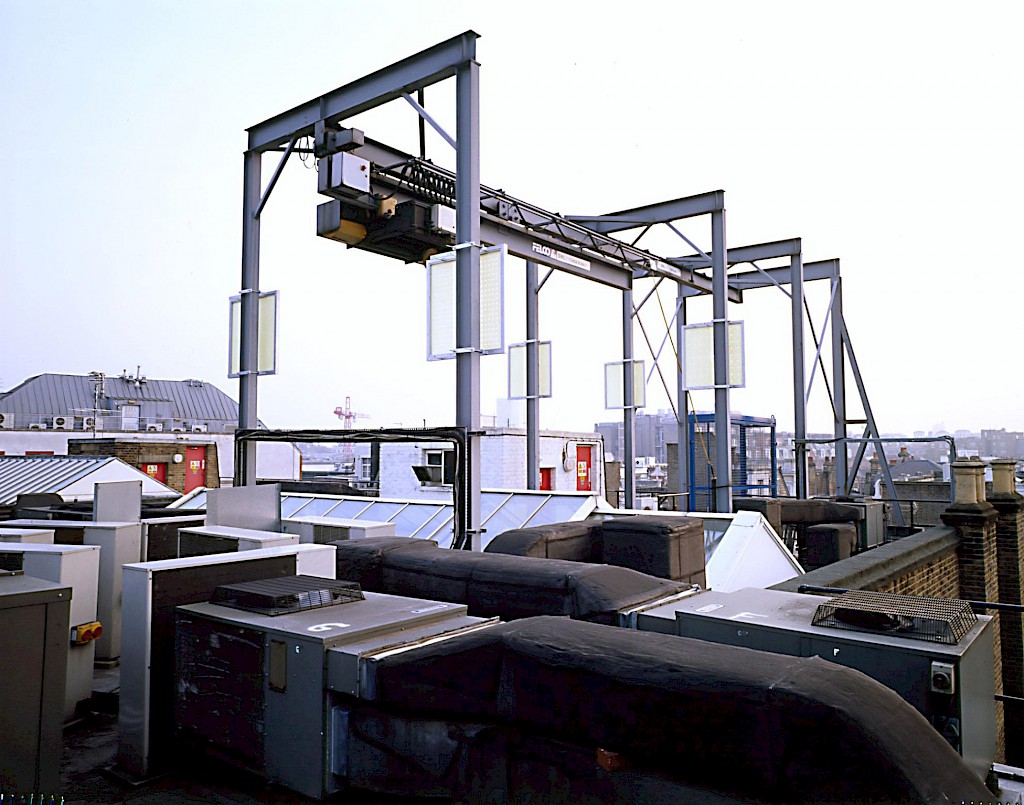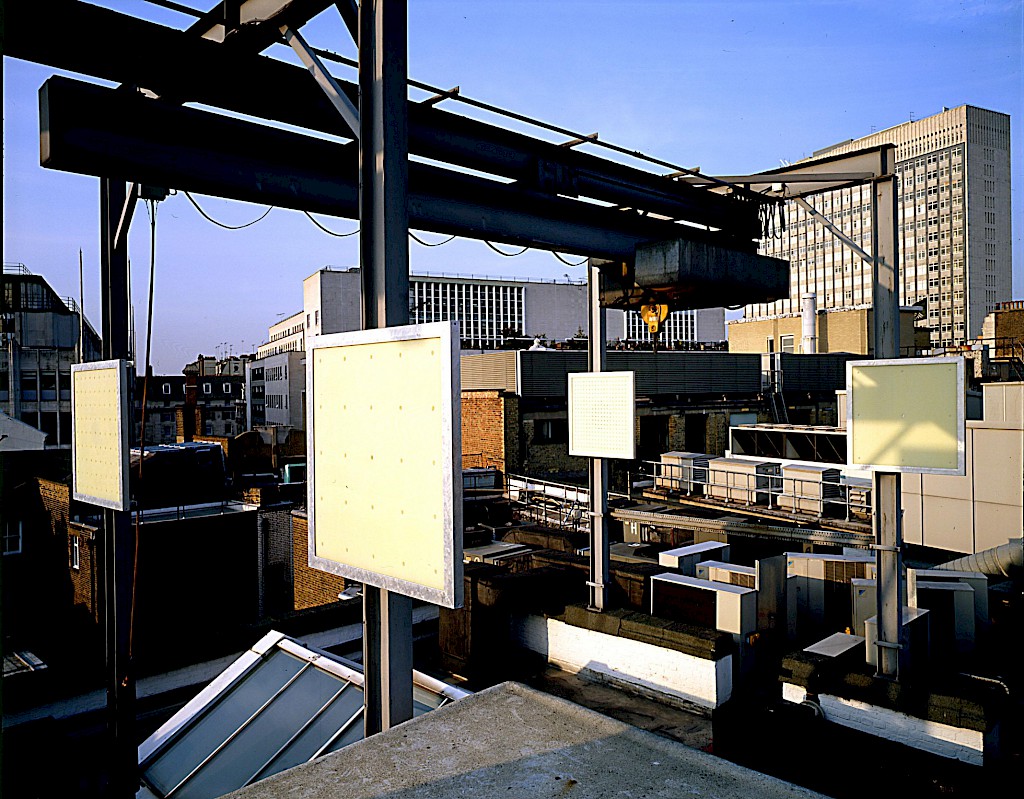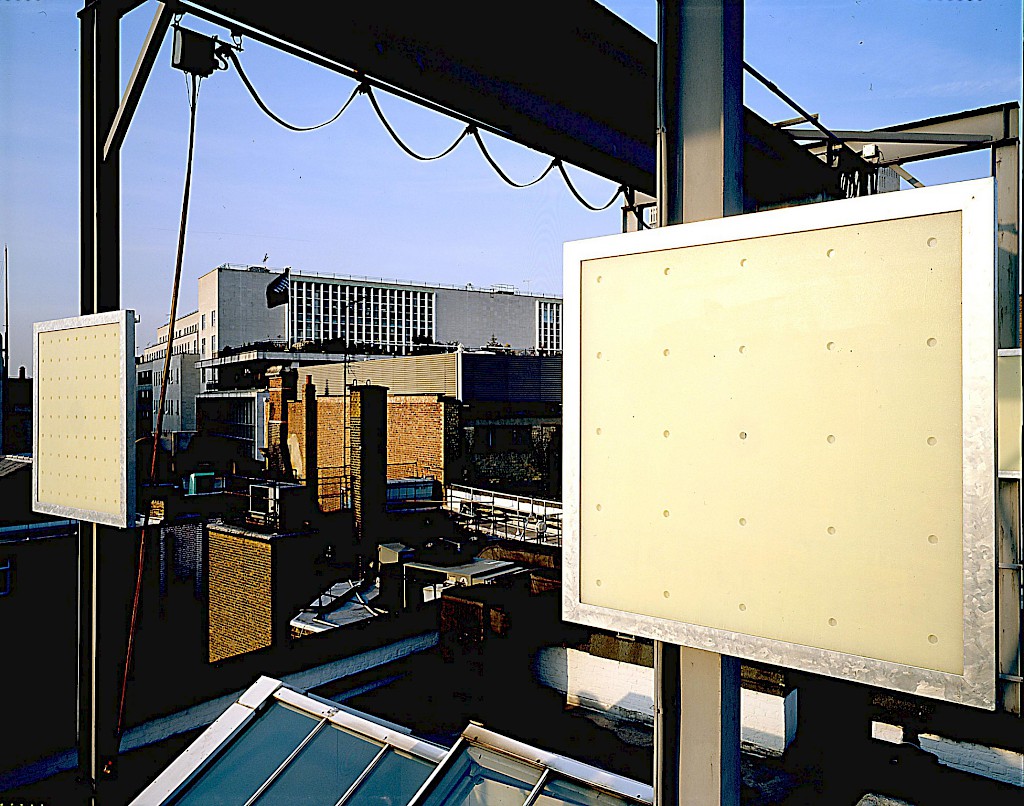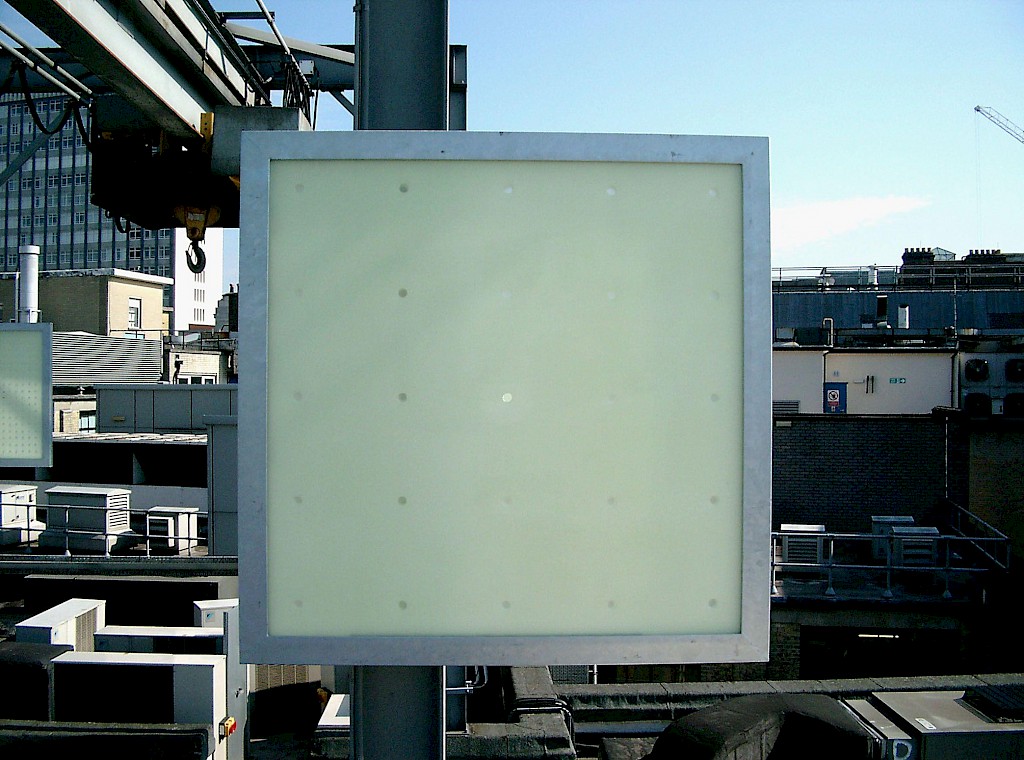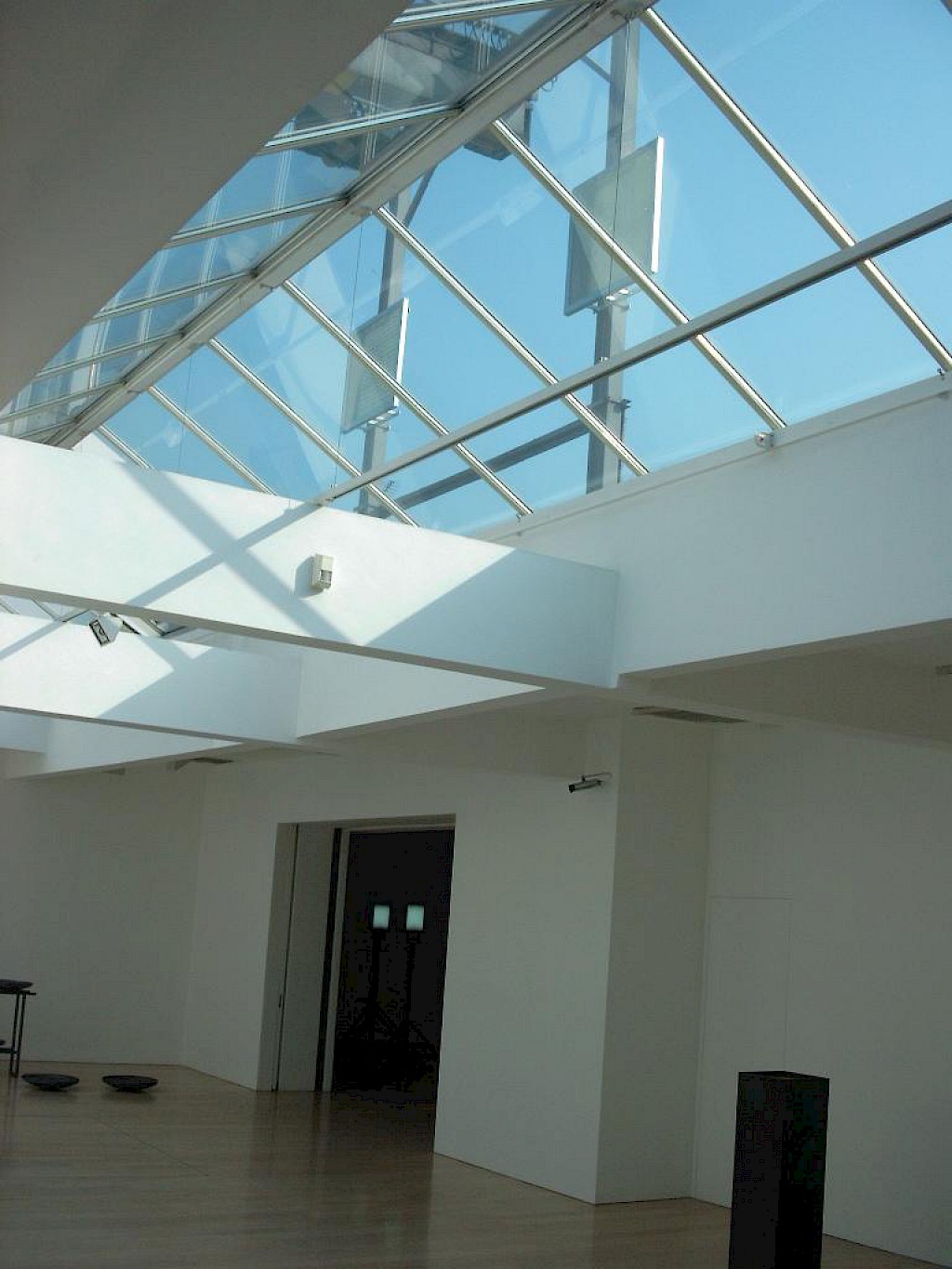Asking for an encounter on starboard side
2003 zinc galvanised steel, acrylic, fluorescent paint Installation on roof of Annely Juda Fine Art, London
Distance and Proximity or
“Asking for encounter on the starboard side”
Different positions in the main gallery at Annely Juda Fine Art offer a view of a highly fascinating roof landscape: cranes, I-beams, chimneys, gables and the cloudy sky over London belonging to a world far away from the illuminated rooms of the gallery. Magically drawn to this place, Werner Haypeter decided to leave an artistic mark here. The arch-like rows of steel girders provided both a point of reference and an ideal location for the installation. Each of the five elements are framed in zinc coated steel 109.5 cm square. They are filled with “paintings”, formed by the layering of three sheets of painted and hole-punched acrylic: for example, in one element, Werner Haypeter has drilled 18 x 18 holes of 20 mm diameter into both outer layers. Due to the evenly spaced holes on their surface they resemble industrially produced punched metal sheets. Another sheet with a large central hole is placed between them and this hole¹s area equals the sum of the smaller holes. According to a system developed by Werner Haypeter, the quantity of holes decreases in each subsequent element and in this way their density is reduced. Following the inherent logic of the work, the central hole, however, becomes significantly smaller with each element.
In the end, five small holes in the outer sheets, resembling the pattern of a dice, correspond to one small central drilling. The glass itself is not transparent, but buffed on both sides and painted with a soft fluorescent green (Hatotex). Unlike industrial colouring, the surface is a distrupted and curiously undefinable hue, where traces of the brushwork are visible on close examination. All of the elements work as paintings connected by an inherent system which determines their appearance. As the installed paintings can only be viewed from a distance, the question of their size was important. A successful outcome seemed to depend on this issue. Werner Haypeter made investigations outside the artistic environment by consulting experts familiar with this sort of problem. He found the answer within the field of nautical navigation: ships¹ equipment of flashing lights and signals. At the same time as needing to be visible from a distance, such signals must be small so as not to hinder any actions on board. Since the work of art has to function under similar circumstances, the ³signal flag frame BO/L3² with a signal area of 100 x 100 cm served as a measure. Its naval message is: “Asking for encounter on the starboard side”. This encounter naturally forbids close proximity.
These paintings are characterised by attributes almost unrecognisable from a distance: the distribution of the holes, the layered sheets of acrylic and the matt colour. They will glow a while at dusk and then disappear into the night sky. As so often in Werner Haypeter¹s work, technical perfection and artistic touch go hand in hand: the construction of these paintings follows the rules of technology through which they become suited perfectly for the conditions of the installation. The artist himself completed the painting and drilling with conscious deviation from the “ideal” path of lines, leaving his mark on the work. Although these aspects will hardly be visible from a distance, their meaning is not diminished for Werner Haypeter. From the numerous variations permitted by the system, only five have been realised. Understood as a constant they are the basis for further variations: in a different place, a different configuration, alone or in a group. The possibilities of this open system can be perceived by each viewer through a process of creative understanding.
[Textauszug: Maria Müller: Distance and Proximity or 'Asking for an encounter on Starboard side' in: »Colour in Light«. Ausst.-Kat., Annely Juda Fine Art, London, 2003]


